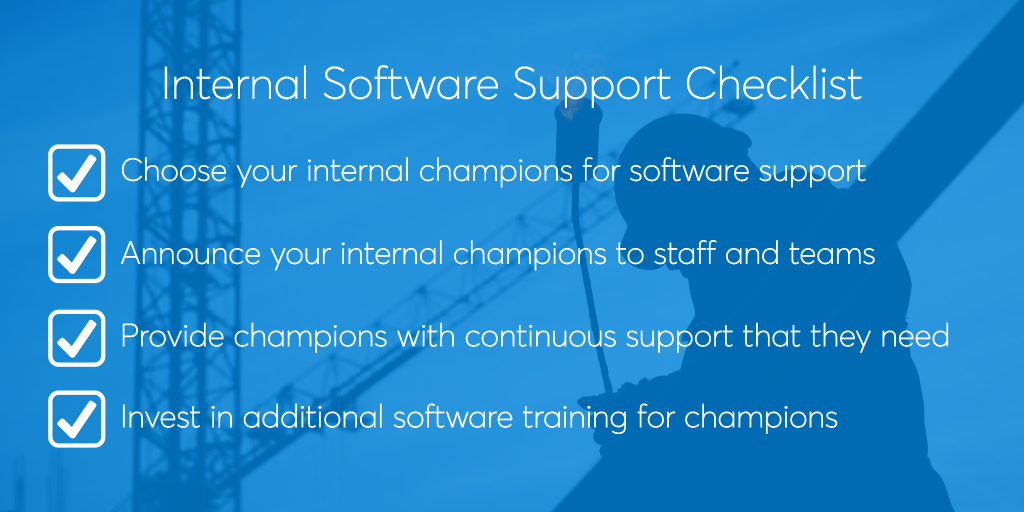It Starts with a Cultural Change, Not Just Getting Rid of Paper
The industry-wide shift to new construction technology has been long and overdue. However, most industries in the world have already undergone a similarly significant and timely transformation as technology becomes more advanced, available and affordable. Think about the healthcare industry for a minute. Over the past decade, a massive outdated industry plagued with a paper based system has (mostly) made a successful shift to electronic health records (EHR). Today, nearly 96% of hospitals and 78% of physicians use certified EHRs. Although the transition was by no means painless, today 87% of administrative staff believed that they have seen enhancements in financial and operational capabilities due to this shift. One success factor in healthcare’s transition to digital? A fundamental culture change.
Several similarities exist between healthcare systems and construction sites when it comes to successfully implementing new construction technology and software. While the construction industry doesn’t have the same federally recognized, national standards that helped push the transition in healthcare, both industries benefit from the data and information sharing that digitalization brings. In general, the speed and efficiency at which an industry adopts and sees the benefits of the advancement of technology can depend on numerous factors, but a primary cause of an industry lacking adoption is how willing the people within it are to make the changes happen. Without an industry-wide, or at least company-wide, commitment to the culture change new construction technology brings, innovation will simply not be adopted. However, on the whole, construction has not hit the point of an industry-wide culture change when it comes to technology–just yet.
Company and leadership support and buy-in are some of the most important factors to have when implementing new software at any company. It doesn’t matter if the tool is tracking a patient’s medical history or it’s a tool to view and collaborate on construction drawings, if the people telling you to use it don’t believe in it or support it themselves, it’s doomed to fail from the start. Therefore, it’s leadership’s responsibility to get their teams excited for the transition and showcase that the company is serious and committed to the change, while providing the appropriate support to help a smooth transition to the new tool.
If you’re in the process of making the shift to new construction technology in your company, below, we’ll discuss how you can rollout software from the ground up–starting with your company’s culture. In each key phase, we also included a short checklist to help you get started on technology implementation action items today.
Announce the Software in a Meaningful Way
Your ability to get your team excited about new software can make or break a successful implementation. It doesn’t matter how much money you spend or how serious you are about it, if no one is excited, adoption is going to take a long time, if ever at all. In fact, according to a recent MIT study, 63% said the pace of technological change in their workplaces is too slow. Failure or a significant slowdown in adoption can negatively impact your ROI and bring down company morale as a whole. Therefore, plan to announce the new software in creative ways beyond a bland announcement at a meeting or in an email that will most likely be quickly deleted. Instead, bring the team together for the announcement with an extra incentive like lunch, snacks, or even hold a raffle or a swag giveaway to increase attendance and attention.
Most importantly, beyond getting your team to show up, pay attention and learn what the new tool is, you need to show your team how new construction technology and software are going to help the company be successful, and ultimately make their lives easier. People care about the success of the company they work for, but there’s a 99% chance they care more about how it impacts their own workflow and lives.
Focus Resources and Attention to Make the Transition Successful
After you get your team excited, you need to show that this is a major undertaking by your company. If you’re serious about making this successful, be diligent about dedicating time and resources to make it a success. Most likely, you’ll need mobile devices or tablets for the software, so provide these to your staff immediately or encourage them through reimbursements to get their own. If your team requires training (which they most likely will), invest the time and money into a training program that is comprehensive and specific to the job your users will be working on. According to a 24X7 Learning survey, 12% of trainees revealed that they apply the skills from the training they receive to their jobs. Therefore, be clear about the expectations from the program and follow through on key dates and initiatives. Consider dividing training sessions by job function or team to ensure lessons are customized and specific to individual roles and jobs.
Hold yourself and team members accountable for tasks and completion dates when it comes to training. The worst thing you can do is think your employees will figure it out themselves (spoiler alert, even if they figure it out, they all won’t be using it the same way). Think about it this way; if you buy a forklift for the job site, but don’t train anyone on how to use it, two outcomes will likely occur. First, it won’t be used and wastes money; second, or it will be used incorrectly, and someone could get hurt. By going the extra mile by having all the necessary hardware available in advance of implementation and establishing a comprehensive training program, you’re setting your users and technology rollout for success.

Select Your Champion as a Go-to Resource for the Rest of Your Team
Creating excitement and showing your staff that your company is serious about adopting new construction technology is great at first, but it won’t guarantee success in the long term. Thus, having an internal support structure for your new software is going to be the difference between you and your competitors. If you and your competitor are implementing the same software, but one of you sets up an organized and comprehensive support structure for your team, who do you think is going to gain more benefits from the tools quicker?
When you begin your training program, your users are going to have a lot of questions that someone is going to need to answer. A lot of software companies you may work with have sales reps and consultants, but most foreman and superintendents aren’t going to want to call or have the bandwidth to email someone outside of the company to get their questions answered. Enter your employee “champions”. To get an internal support system started, pick a number of users who are proficient with new construction technology and excited about the tool. Establish these key team members as the go-to resource for the rest of the team when they have a question about the software or about workflows involving the software. Your team will be much more willing to bring questions to someone they know and that champion will be able to speak much more accurately to how the software is being used for that specific job.
Another great opportunity of choosing internal champions is that it can be an opportunity for younger and older employees to trade expertise. The older employees are passing along information on traditional construction practices from years of experience in their field, while the younger employees are passing along information on using technology from being raised using it. In the end, your champions will be key drivers of the culture change that drives full technology implementation in your company, so choose them wisely.

It’s All or Nothing in the Transition to New Construction Technology
Whether it’s a healthcare or construction company that purchases software, they’re doing it to make workflows more comprehensive and efficient, which will lead to cost and time savings. If your employees don’t make that connection and a fundamental culture change in how your employees view technology doesn’t happen, then why are you trying to implement new software at all? In an entire industry, as well as a specific company, leadership support and finding champions to promote new technology is crucial to the success of a true culture change. Get your team excited, trained, continuously supported and most importantly, set your team and your company up for success by going all-in with your new tool. Software works much better for your company when there is a motivated and supported user at the controls. So, commit to being the driving force to adopt new construction technology in your company today.



Responses